How to Visit Hobbiton in New Zealand – Yes, It’s Real!
Disclaimer: This post may contain affiliate links. Please see our Disclosure Policy and Advertiser Disclosure for details.
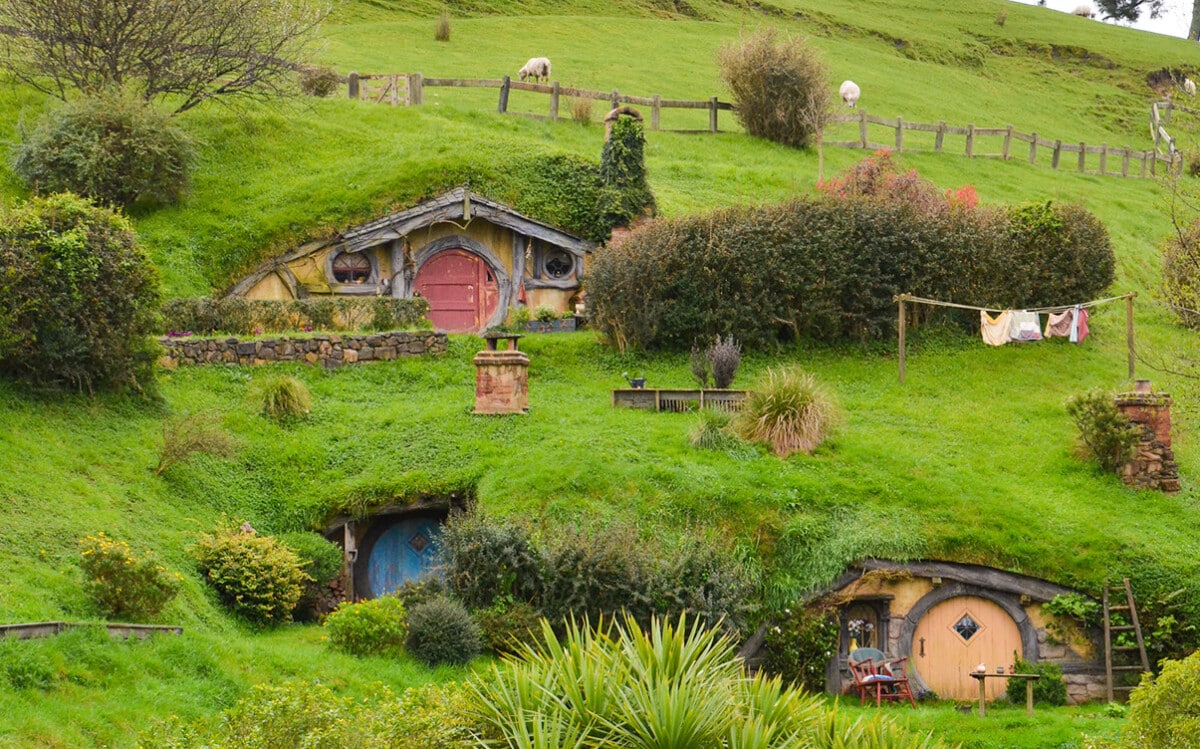
The Lord of the Rings has been a popular book series for 70 years, but until recently, if you wanted to go visit any of the locations mentioned in the book, you’d have no luck. The best options available to you were landscapes in Europe and the UK, where Tolkien lived. For example, you could visit Sarehole, the location in England where the Shire was largely based upon. Though, truth be told, any pastoral farm-focused rural countryside would fit the bill. It isn’t as though hobbit holes and the hobbits themselves are actually running around out there to be seen and visited.
All of this changed in 2001 when Peter Jackson released the first of the immense, award-winning series of movies based on the books. Through novel filmmaking techniques and liberal use of practical effects, Jackson created an astonishing set of films that are impressive to watch even today, over 20 years later.
Much like how Tolkien based the Shire on his childhood village, so too did Jackson base his version of the Shire and Hobbiton itself on his homeland, New Zealand. And, really, why not? New Zealand is a fantastic island nation covered in vibrant green pastoral landscapes, as many sheep as there are people, and a sense of fantastic wonder you can’t find much of anywhere else in the world.
As part of creating the sets for the Lord of the Rings and later Hobbit movies, Peter Jackson created actual hobbit holes – the hillside homes of our hairy half-size heroes – and, in a brilliant stroke of foresight, left those sets in place after filming was complete. Now, whether he did so because he planned to use them later or for other reasons is something only he can answer.
Note: This isn’t actually quite true. Peter Jackson built Hobbiton in 1999 for the Lord of the Rings films, but when he was done, the temporary construction was torn down and removed; good practice for any filmmaker. That didn’t stop people from coming to the area, and the property owners started giving tours of the largely clear landscape in 2002. In 2009, when it came time to start The Hobbit trilogy, Jackson struck a deal to rebuild Hobbiton with more permanent materials to create what exists and thrives today. It officially opened once more for full tours in 2012.
What matters to you, and to us, is that New Zealand thrives on the tourism brought in by the world’s Real Life Hobbiton, the combination of the movie set and surprisingly realistic village for the hobbits built into the countryside.
Where is it, how can you visit it, and what should you know? Read on to find out more.
What and Where is Hobbiton?
Hobbiton is, as mentioned, the movie set for the Shire, the home of the hobbits in the Lord of the Rings movies. Though it has seen much use in six films, it’s the only set that hasn’t been torn down and removed, and it remains in good condition. It’s maintained by local keepers who encourage visiting it as a tourist destination.
The real life Hobbiton is a 14-acre expanse of landscape with 44 different, distinct hobbit holes (the homes with the iconic round doors built into the hillsides), as well as pastoral farms and well-kept gardens, all of which are necessary to feed the hobbits who live there.
To ensure pristine, largely untouched wilderness to be used for filming, Jackson chose a location in rural New Zealand for his hobbit holes. Hobbiton can be found along Buckland Road, just off Highway 29, about halfway between the villages of Matamata and Cambridge. For larger cities to use as landmarks, it’s more or less in the center of the triangle drawn by Tauranga on the coast, Hamilton well inland, and Rotorua on the lake. For the outsiders who have likely only heard of a handful of New Zealander cities, it’s roughly a two-hour drive from Auckland. All of this is on the North Island of New Zealand, one of the most picturesque places in the world.
Truthfully, though, anywhere you go outside of a city in New Zealand is liable to look more or less just like Hobbiton. The rolling green hills, the bright blue skies, the crystal-clear waters in streams and ponds are all already there, and that is why Jackson chose New Zealand for his filming in the first place.
What is There to See in Hobbiton?
Hobbiton is New Zealand, but it’s also a fantastic world created for the films. Fans of Lord of the Rings can see many famous locations from the movies. The most prominent of them are:
- Bag End, the home of the Baggins family and site of many of the hobbit-centric scenes in the movies.
- The Party Tree, the large and impressive tree that stands tall over the countryside, though as trees are living things, the original had died and has been replaced by a fiberglass and steel construction with silk leaves.
- The Old Mill, a water mill that featured prominently in many scenes in the movies.
- The Green Dragon Inn, the largest and most impressive fantasy structure in the Shire portion of the movies. It’s no Minas Tirith, but unlike Minas Tirith, it exists in real life.
- 44 different hobbit holes, each distinct in some way.
- One hobbit hole open to entry, typically so the tour guide can snap a photo of you in the scene for your social media and memories. It’s not in the Bag End complex, though; you have to go elsewhere for it.
- Real, in-operation fields, tended by full-time gardeners. The produce they grow is even used in the café!
- Pickles the cat, the resident mouser of Hobbiton, the one and only beloved resident of the set.
There are also trappings of modern tourism scattered throughout. There’s a gift shop, a café, and a garden bar to whet your appetite and sate it at the same time.
There are official organized tours throughout Hobbiton, which run every 30 minutes. Given the immense and enduring popularity of the Lord of the Rings, the Shire, and Hobbiton, it should come as no surprise that these are very frequently full and that Hobbiton is usually full of tourists and tour groups. There’s a reason why most blogs covering Hobbiton are full of close-up pictures of hobbit holes and not panoramic landscape shots: those people would be in those photos and break the illusion.
Just about the only thing Hobbiton doesn’t have is the hobbits. Unfortunately, hobbits aren’t real, and the people in charge of maintaining Hobbiton haven’t seen fit to invent them yet (or hire actor impersonators, which would be tricky given the size of the hobbits, canonically speaking.)
There’s a lot to see in Hobbiton. The place is full of tiny details, from the individualization and personality of each hobbit hole to the details of the set building and the practical realities that went into making Hobbiton as much of a reality as possible. For example, the many hobbit holes vary in scale; some are small, as they would be if hobbits were real. Others are fully human-sized to account for filming with human-sized actors.
In addition to the official tours, here are some of the other more comprehensive tours we recommend for Hobbiton!
- Hobbiton Guided Tour
- Hobbiton & Waitomo Glow Caves Private Tour
- Hobbiton, Rotorua & Wai-O-Tapu Day Trip
Are There Rules for Hobbiton to Follow?
Of course. In order to keep the area pristine, there are quite a few rules you should follow.
Obviously, you want to be as careful of the sets and the environment as possible. No littering, no touching, no taking; consider it just as valuable as pristine nature and practice Leave No Trace.
You can cosplay if you like, whether you want to dress as a hobbit native, as your favorite grey wizard, or another character you would like to have seen in the Shire. However, there’s no reenactment allowed. No hopping in a cart and being pulled by Bill the Pony, no loud scenes of the party, and certainly no magical dragon-shaped fireworks.
Photography is allowed; in fact, the record is 3,500 photos taken in one tour if you’re interested in trying to beat it. However, drone photography is not allowed unless you talk to the property owner ahead of time and get explicit permission. We’ll save you the trouble; unless you’re a national marketing agency, you’re probably not getting permission. Similarly, any photos or videos you take are for personal use only, not commercial or resale use.
You are required to take a tour to access Hobbiton. To keep the crowds to a minimum and ensure every visitor gets to see the full set (and to keep people from wandering where they shouldn’t), guided tours are the only way to experience Hobbiton. Tours range from two to four hours, with the longer tours including meals.
Tickets for the tour are $120 per adult or half that for children between 11 and 17 (free for 0-10 year-olds). That’s for the basic tour; any of the longer tours with banquets are more expensive, of course. There’s also a family pass with two adult and two youth tickets, which essentially gives you one youth ticket free.
It’s also possible to book the venue for a private event. They even allow weddings, though, of course, it’s one of the more expensive venues you can book for a wedding.
One of the biggest tips we can give you is to book early. Tours go quickly, especially in the summer. Make sure to check the weather before your tour when it’s getting close, as well; tours run in rain or shine, and it’s up to you to be prepared for the weather. No one likes having their tour rained on, but it’s just a fact we travelers have to deal with from time to time. For your money, mid-spring is the best time to visit, as it’s when many of the most vibrant flowers are blooming, though the chance of bad weather is a little higher than if you visit during the summer.
Since only one hobbit hole is real and it’s only available for photos on a tour, there’s no hobbit hole to stay in. That said, other enterprising businesspeople in New Zealand have taken it upon themselves to provide, and places like Woodlyn Park have the next best thing available to book for a night or two around your tour. Or, of course, there are plenty of more modern accommodations to be found in any of the villages and cities on the North Island. Some other hotels we’d recommend are:
Other than preparing for the possibility of rain or whatever the weather may be, you don’t actually need much to prepare for a trip to Hobbiton. It’s a well-worn path and well-booked tour, so all you really need is whatever is comfortable enough for you to walk around in. Good shoes, comfortable clothes, a bit of sun protection, and maybe some water are all you really need. Since the tour is only two hours and change, you’re not going to be going for long without access to food or water, and with the café on site, you’ll be fine either way.
That said, we definitely encourage spending time visiting the rest of New Zealand. There’s a ton to do, with all manner of hiking, exploration, and adventures to be had from the north island all the way to the south. It’s almost a waste to go all the way there and do nothing but see a movie set, isn’t it? It’s impressive, and it definitely feels like being part of the fantasy Peter Jackson put together, but there’s a lot more to the country than just this small set of acres. We took the best road trip in New Zealand, from Te Anau to Milford Sound, and included all of our favorite spots we suggest including on your trip here! Additionally, before visiting New Zealand, you should watch our full guide here!
If you’ve ever been to Hobbiton, tell us about your experiences! We love to hear the stories of our followers. More than that, let us know what else you’ve found to do as an adventurer throughout New Zealand. It’s a nation full of stunning nature and unearthly beauty, and you could spend a lifetime exploring, but it never hurts to have a bit of a guide, right? And, as always, if you ever have any questions, please feel free to let us know! We’ll gladly help you out however we can!
You may also enjoy:
2 Comments
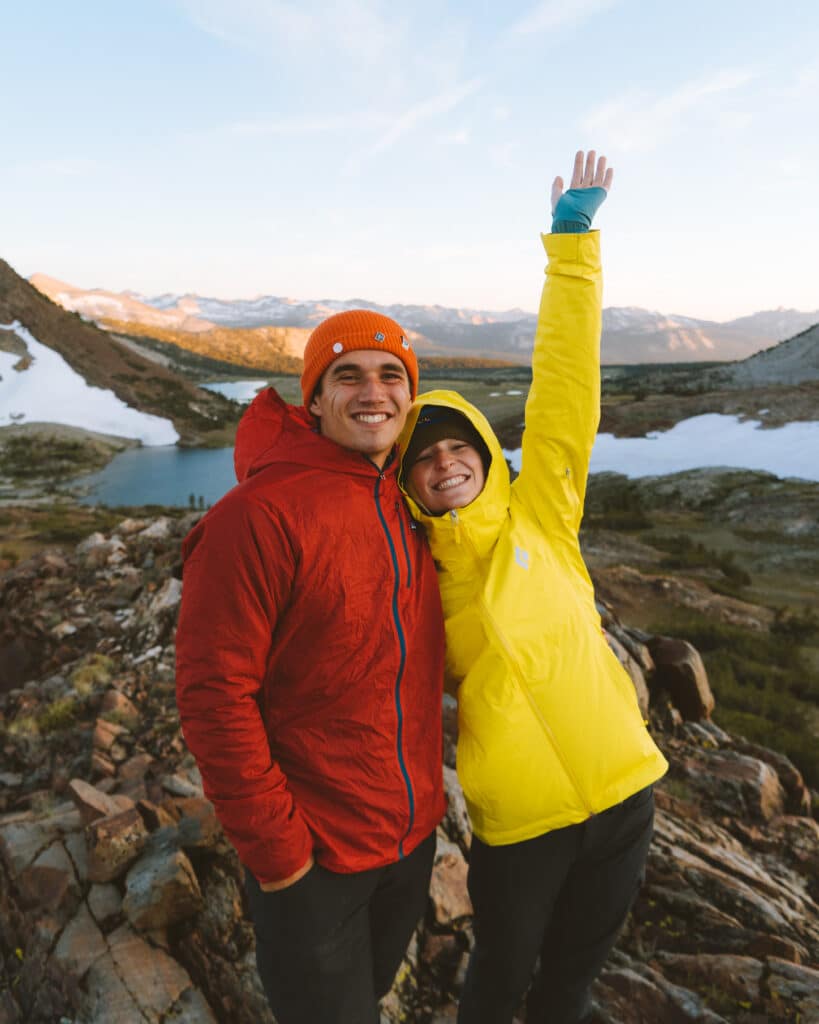
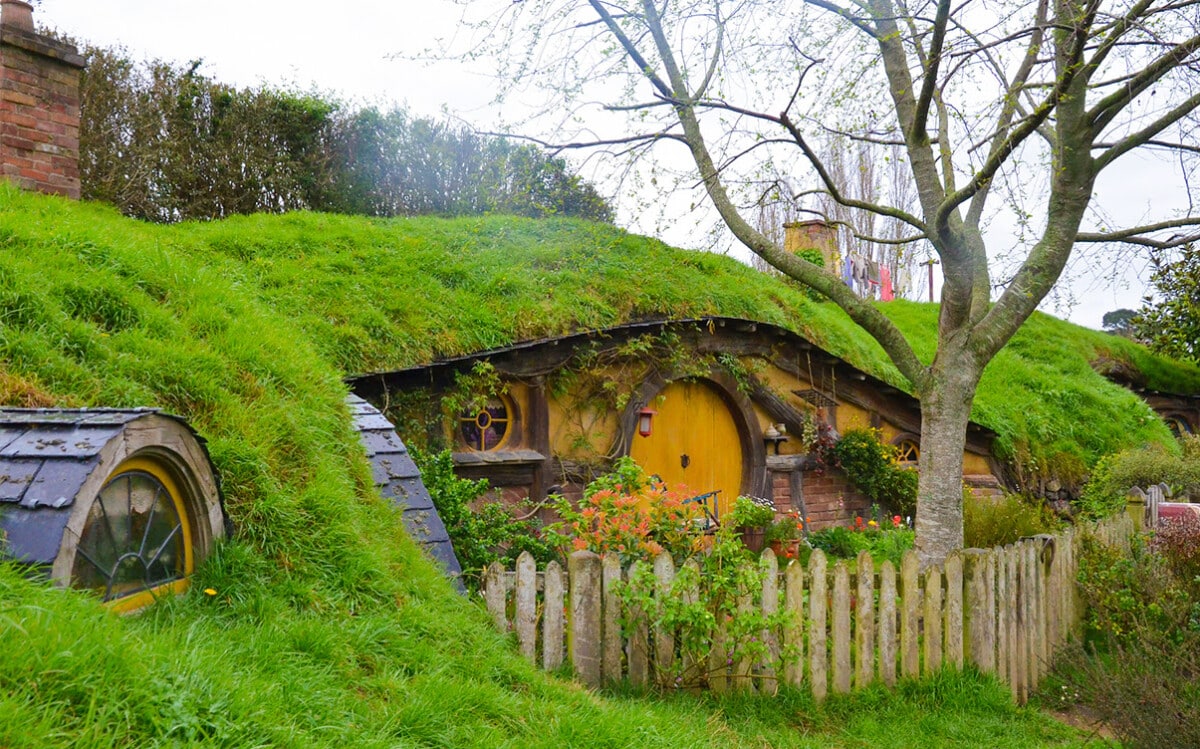
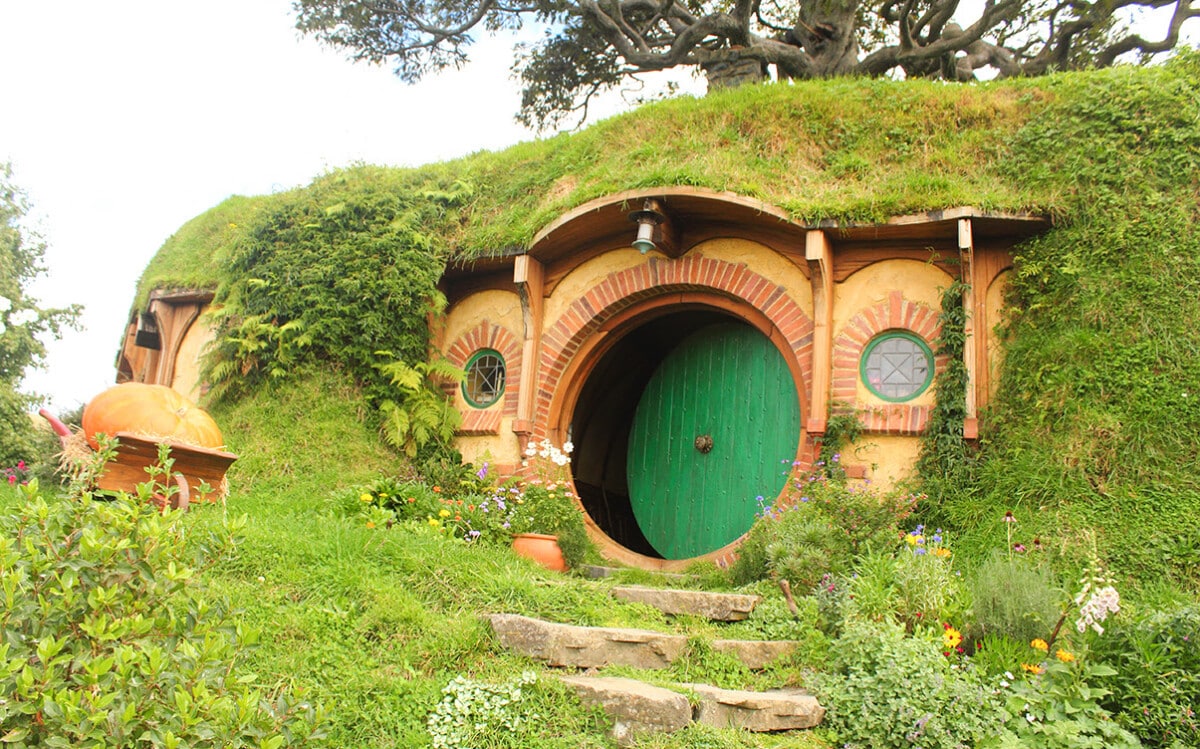
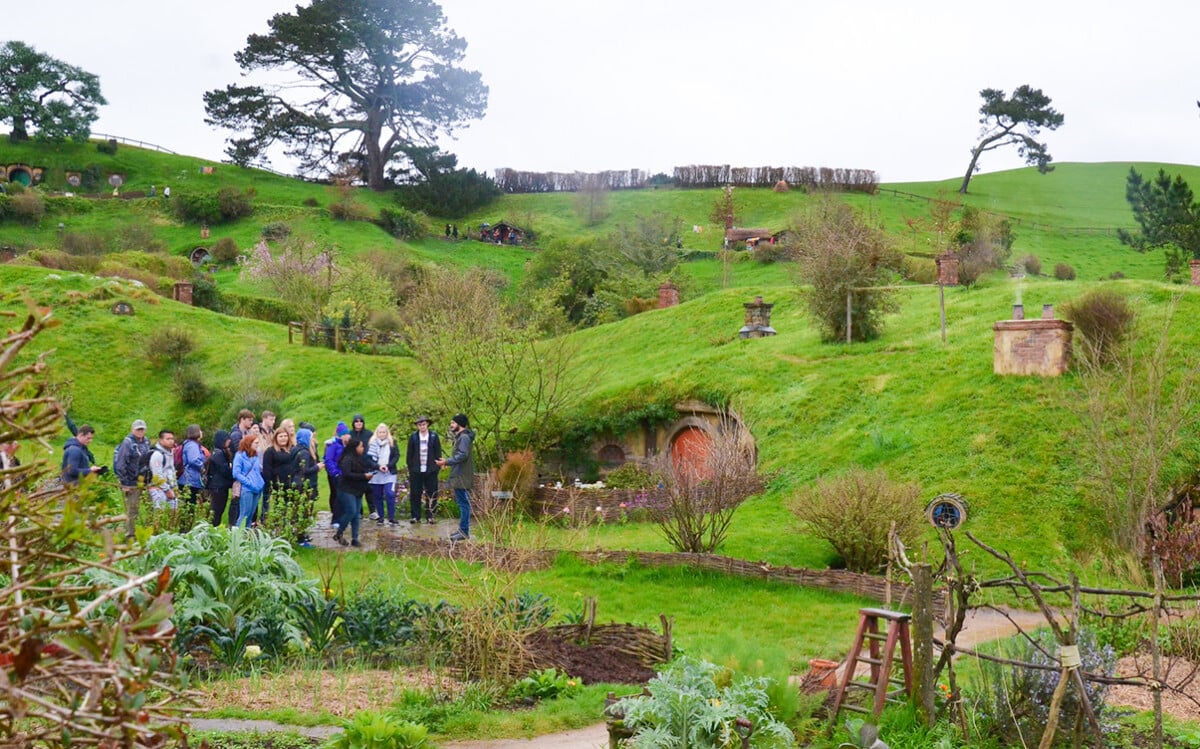
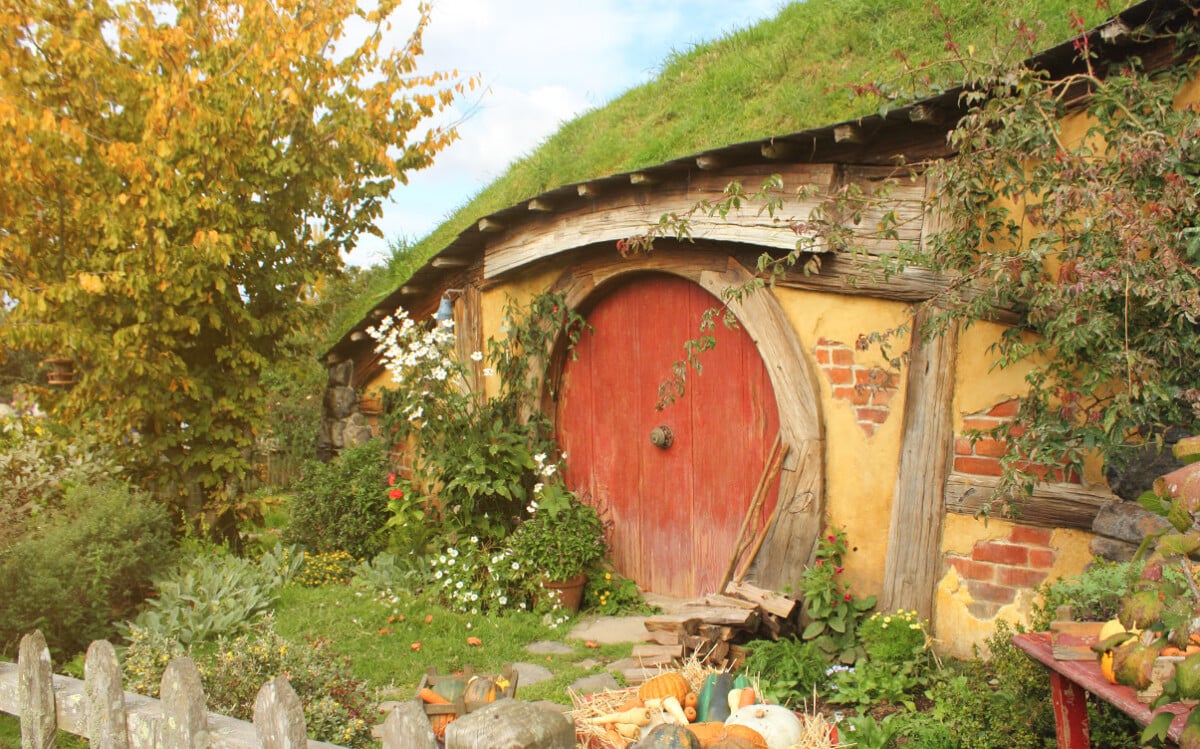
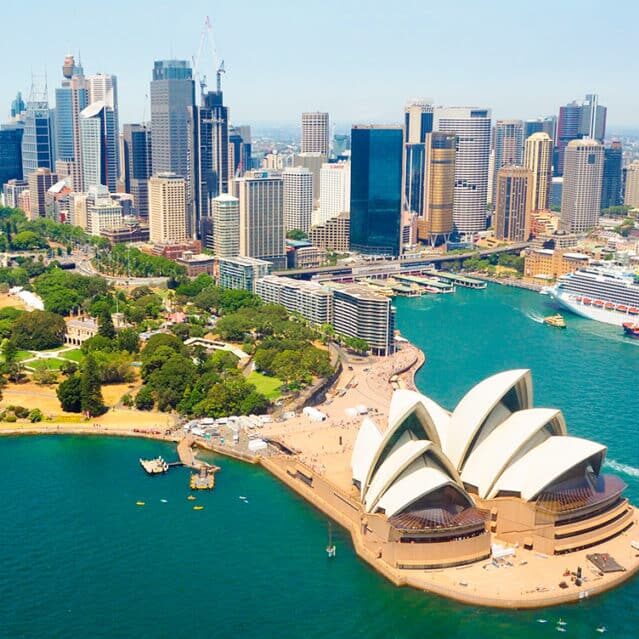


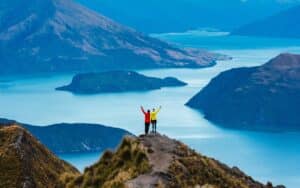
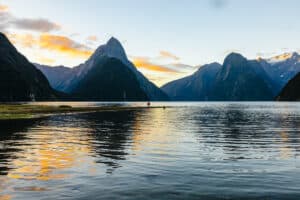
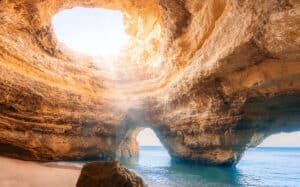
I don’t plan on doing Hobbiton ? Would it be okay? I mean everyone who goes to NZ does this but I have so much else to do I feel I don’t have time for this set. Moreover I just feel a little guilty of not doing. Though I am not an ardent fan of LOR. Can you suggest if it’s okay to skip?
If you’re not super into it, don’t worry about trying to squeeze it in!